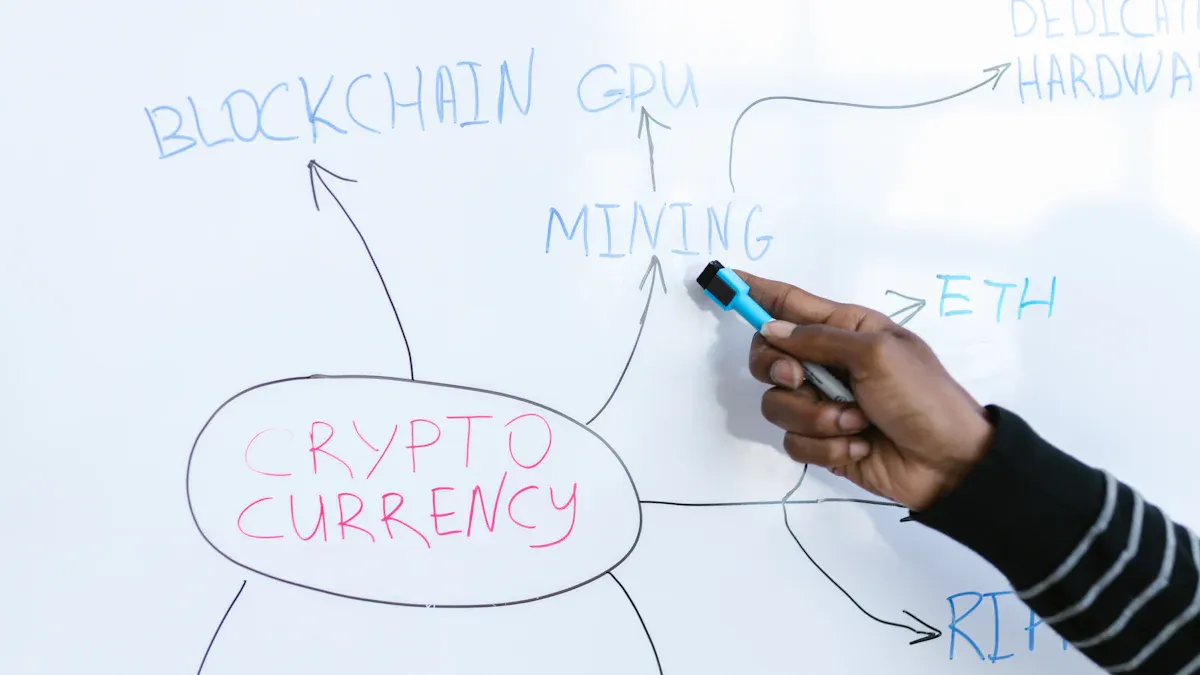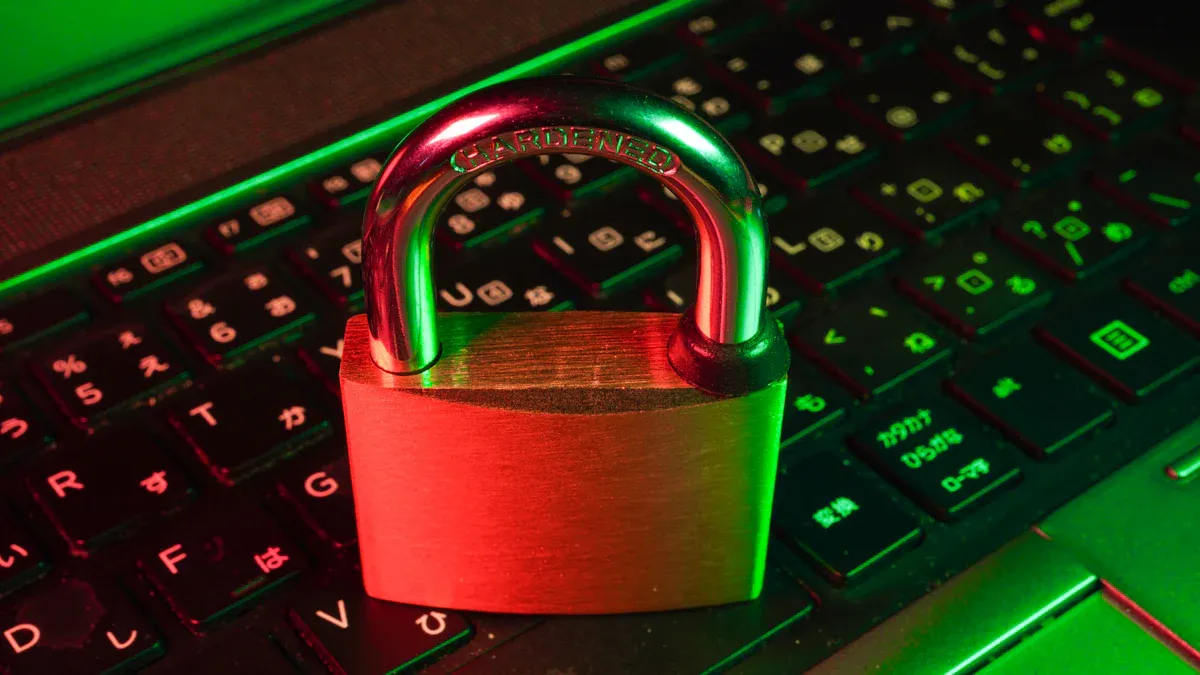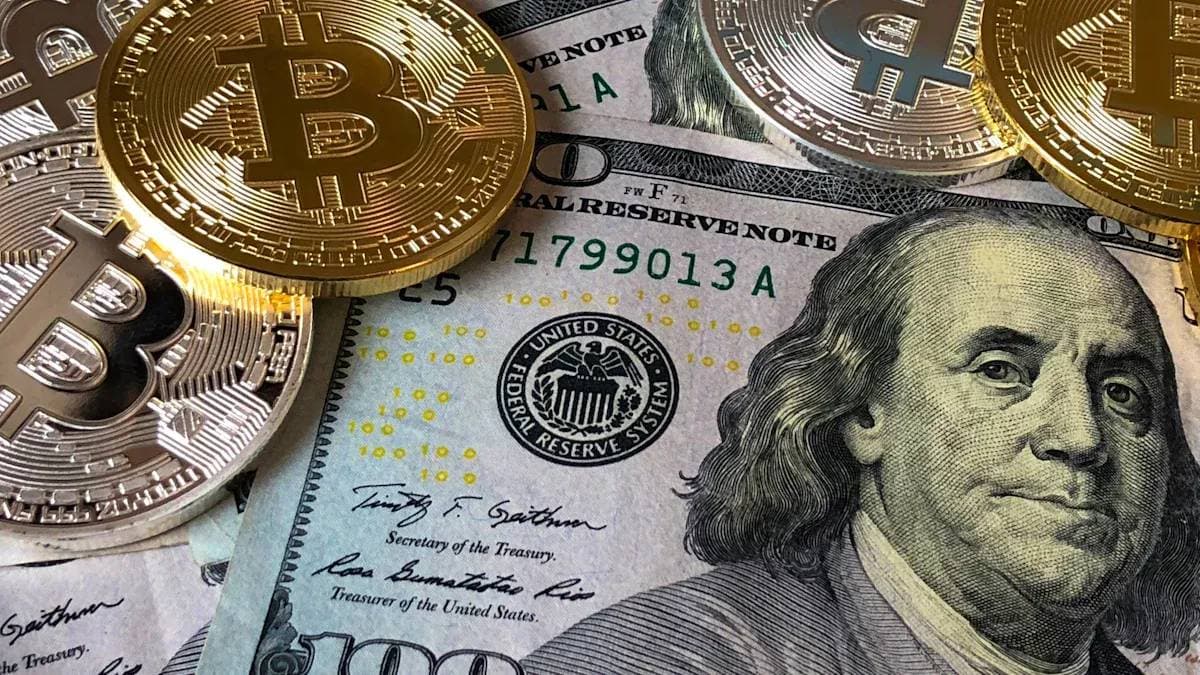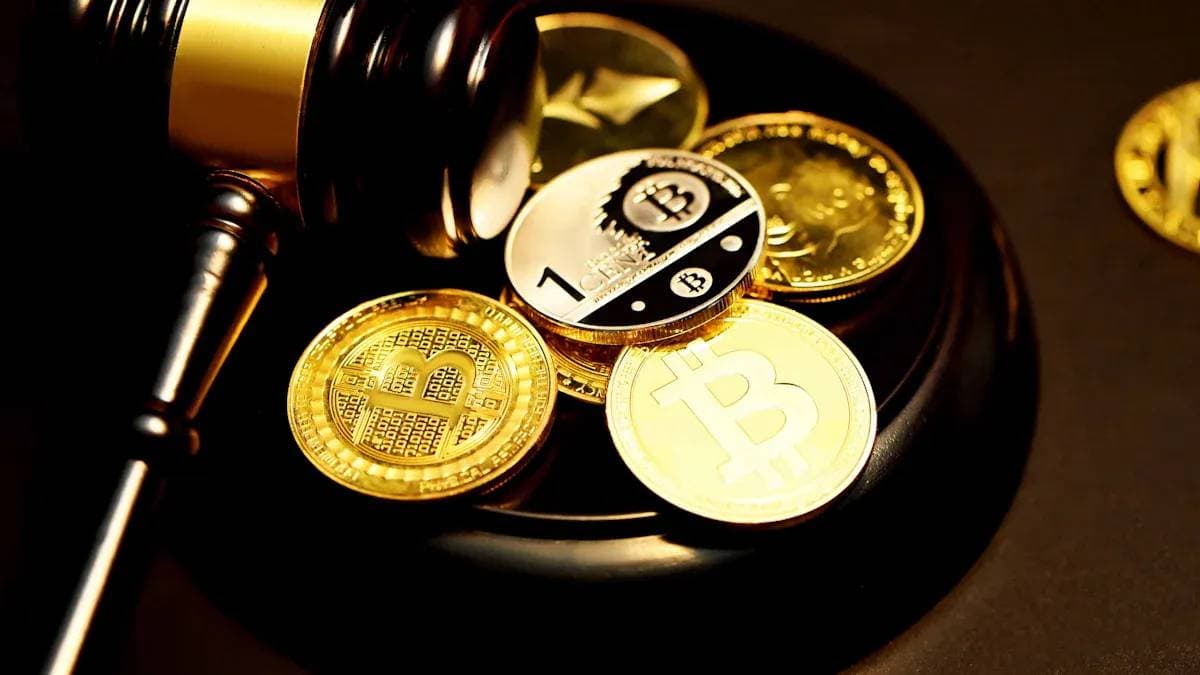- EasyCard
- Trade
- Help
- Announcement
- Academy
- SWIFT Code
- Iban Number
- Referral
- Customer Service
- Blog
- Creator
Avoid These Pitfalls! Essential Safety Tips for Parents Using Stablecoins for Education Remittances

Image Source: unsplash
Safely completing USDT education remittances hinges on “understanding basic principles, choosing the right compliant platform, verifying transfer details, and preventing various scams.”
With the number of students studying abroad projected to exceed 9 million by 2030, the demand for education remittances is growing rapidly. International students alone contribute $44 billion annually to the U.S. economy. This guide aims to provide you with a clear operational manual to help you safely use stablecoins and ensure funds are efficiently used for your child’s education. This article is solely a guide for safe operations and is not investment advice.
Key Takeaways
- USDT is a digital currency pegged to the U.S. dollar value, helping you conduct international remittances quickly and at low cost.
- Choose a regulated platform with a good reputation and set strong passwords and two-factor authentication for your account to protect your fund security.
- When transferring USDT, carefully verify the recipient address and transfer network because once sent incorrectly, funds are difficult to recover.
- Before large transfers, conduct a small test transfer and be wary of any impersonation scams or high-return investment temptations.
- After your child receives USDT, they should exchange it into local currency through compliant channels and understand local tax regulations to ensure smooth tuition payment.
What is USDT and How Does Its Remittance Work?

Image Source: pexels
Before starting operations, you first need to understand the basic principles of this tool. This will help you make more informed and safer choices during remittances.
Understanding the Stablecoin USDT
You can think of the stablecoin USDT (Tether) as a digitized U.S. dollar. Its core feature is that its value is pegged 1:1 to the dollar. This means that theoretically, 1 USDT is worth 1 USD. This “stable” characteristic makes it an ideal tool for cross-border remittances, avoiding drastic price fluctuations like those of Bitcoin.
USDT is currently the most mainstream stablecoin on the market. Its monthly trading volume often exceeds $800 billion, far higher than other stablecoins, ensuring you can easily exchange it for local currency when needed.
How is USDT’s value guaranteed? Tether, the issuer of USDT, claims that every USDT issued is backed by an equivalent real-world asset reserve. These reserves mainly consist of highly liquid assets to ensure value stability.
According to its latest reserve report, over 85% of reserves are cash and cash equivalents, with the vast majority being U.S. Treasury bills.
How USDT Cross-Border Remittances Work
USDT uses blockchain technology for transfers. You can imagine it as a globally shared, publicly transparent electronic ledger. When you initiate a remittance, the transaction is recorded on this ledger, and funds are sent directly from your digital wallet to your child’s digital wallet. This process bypasses the complex intermediary bank network in traditional banking systems, achieving near peer-to-peer cross-border payments. The recipient only needs a smartphone and a digital wallet app to receive funds.
Advantages and Risks Compared to Traditional Wire Transfers
Understanding the differences between USDT remittances and traditional wire transfers can help you determine if it suits your needs.
| Feature | USDT Remittance | Traditional Bank Wire Transfer |
|---|---|---|
| Arrival Speed | Extremely fast, usually completed within 5-15 minutes. For example, on the TRC-20 network, it takes about 3-5 minutes. | Slower, typically requiring 1-5 business days or longer. |
| Transaction Cost | Lower, usually a fixed small network fee (about $1-$5), unrelated to the amount. | Higher, including handling fees, telex fees, and intermediary bank fees, typically $25-$50. |
| Convenience | Available 24/7, no holiday restrictions, operable with just internet and a smartphone. | Restricted by bank hours and holidays, with a relatively cumbersome process. |
| Main Risks | Operational risks: Errors in address or network selection may lead to permanent fund loss. | Process risks: Errors in information entry may cause refunds and delays, incurring additional fees. |
Although USDT remittances have clear advantages in speed and cost, you must clearly recognize that operational accuracy is crucial. The following chapters will focus on how to avoid these operational risks.
Safely Using Stablecoins: Preparation Phase
To do a good job, one must first sharpen their tools. Before your first remittance, thorough preparation is the cornerstone of fund security. Following these three steps will lay a solid foundation for safely using stablecoins.
Choosing a Reputable Trading Platform
Your first step is to select a safe and reliable trading platform, which is your gateway to purchasing and sending USDT. A wrong platform choice may lead to fund loss. When choosing, focus on the following criteria:
- Compliance and Licensing: Does the platform hold authoritative regulatory licenses? For example, platforms operating in the U.S. need to register as a Money Services Business (MSB) and comply with strict anti-money laundering (AML) and know your customer (KYC) regulations. This ensures the legality of platform operations.
- World-Class Security Systems: The platform should have top-tier cybersecurity protection and undergo regular third-party security audits to protect your assets from hacker attacks.
- User Reputation and Usability: Choose a platform with good user reviews and a clear interface. For novice parents, platforms like XREX with user-friendly interfaces can significantly reduce errors due to operational unfamiliarity.
Distinguishing Between Hot and Cold Wallets
Digital wallets are where you store USDT, divided into “hot wallets” and “cold wallets,” with vastly different security levels.
Hot Wallet: Always connected to the internet, usually a mobile app or web wallet. It is convenient and fast, suitable for small, frequent transactions. But due to its online nature, it is more vulnerable to hacker attacks. Statistics show that wallet breaches have caused over $1.7 billion in crypto asset losses.
Cold Wallet: A physical device not connected to the internet, similar to a bank safe. It stores your private key (equivalent to a password) offline, providing the highest level of security and the best choice for long-term storage of large funds.
For safety, we recommend storing most funds in a cold wallet and keeping only a small amount of USDT in a hot wallet for upcoming remittances.
Setting Strong Passwords and Two-Factor Authentication (2FA)
Setting strong security defenses for your trading platform account is crucial.
First, create a complex password consisting of uppercase and lowercase letters, numbers, and symbols.
Second, you must enable two-factor authentication (2FA). When logging in or transferring, in addition to the password, you need to enter a dynamic verification code generated by your phone. This greatly enhances account security.
When choosing a 2FA method, the security ranking is as follows:
- Authenticator App (Most Secure): Such as Google Authenticator. Verification codes are generated locally on your phone, making it almost impossible for hackers to steal remotely.
- SMS Verification (Less Secure): Hackers may intercept your SMS verification codes through “SIM card swap attacks.”
To maximize fund security, be sure to choose an authenticator app as your 2FA method. This is a key step to ensure you can safely use stablecoins.
Core Operations: Avoiding USDT Transfer Risks
After completing preparations, you will enter the most critical part of the process: the actual transfer operation. A major feature of digital currency transfers is their irreversibility. Once funds are sent incorrectly, recovery is nearly impossible. Therefore, you must verify every step like a pilot executing a pre-takeoff checklist. The following are the three most error-prone and consequential links; please be highly vigilant.
Transfer Network (Chain) Selection Error
You can imagine different blockchain networks (such as TRC-20, ERC-20) as disconnected highway systems. Your USDT is like a car that can only travel on the specific highway you choose. If you send a car meant for Highway A to the entrance of Highway B, the car will get lost and never reach its destination.
Real-World Lesson: Wrong Network, Funds Lost
- Scenario: You intend to send USDT from a trading platform to your child’s wallet, where the wallet address is based on the Ethereum network (ERC-20), but you mistakenly select the Tron network (TRC-20) during transfer.
- Result: Your funds will successfully leave the platform but enter an unclaimed address on the Tron network. Since the two network systems are independent, your child’s Ethereum wallet will never receive the funds.
To avoid this, you need to note:
- Confirm in Advance: Before transferring, confirm with your child which network their provided recipient address belongs to (most commonly TRC-20 or ERC-20).
- Carefully Select: On the platform’s withdrawal page, you will see a “transfer network” or “chain name” option. Ensure the network you choose matches the recipient address’s network exactly.
Cost Differences Across Networks When selecting a network, besides ensuring correctness, you can also consider cost factors. The TRC-20 network is favored for its low transaction fees, while ERC-20 fees rise significantly during network congestion.
| Feature | TRC-20 (Tron) | ERC-20 (Ethereum) |
|---|---|---|
| Transaction Fees | Lower, usually very cheap | Higher, can be expensive during congestion |
| Specific Fee Range | Usually under $1 | Several dollars to over $20 |
For education remittance scenarios with low urgency, choosing the TRC-20 network is usually more economical.
Recipient Address Copy Error
A USDT recipient address is a long string of letters and numbers, such as Txxxxxxxxxxxxxxxxxxxxxxxxxxxxxxxxx. It is similar to a bank account number but longer and more complex, impossible to input from memory. Therefore, copying and pasting is the only option, which introduces new risks.
💡 Beware of “Clipboard Injection Attacks”
A computer virus called “clipboard injection attack” (Clipboard-injector attacks) specifically targets digital currency users. When you copy a legitimate recipient address from a webpage or chat software, this malware instantly replaces it in your computer’s clipboard with a hacker’s address. If you paste and transfer without checking, your funds will be sent directly to the hacker.
To 100% ensure address accuracy, please follow this “double verification” principle:
- Copy Address: Obtain the complete recipient address from your child and copy it.
- Paste Address: Paste it into the trading platform’s “withdrawal address” field.
- Cross-Check: This is the most critical step. Visually verify that the first 4 characters and last 4 characters of the pasted address match the original exactly. Since hackers rarely generate an address with the same start and end as the original, this simple action greatly prevents such scams.
Ignoring Pre-Transfer Small Test
Before your first transfer to a new address, especially for large tuition amounts, conducting a small test transfer is an essential safety step. This is like a “safety drill,” using minimal cost to verify the entire transfer process is smooth and accurate.
The process is very simple:
- Initiate Small Transfer: First send a small amount of USDT to the target address, such as $5 or $10.
- Wait for Receipt Confirmation: Confirm with your child whether they successfully received the small funds.
- Execute Large Transfer: After confirmation, transfer the remaining large funds using the exact same network and address.
Some may worry about extra fees for test transfers. In reality, this “insurance fee” is very low. For example, a transfer on the TRC-20 network typically costs less than $1. Spending less than the cost of a coffee to ensure the safety of tens of thousands in tuition is undoubtedly wise. Some platforms also offer “testnet” features, allowing you to simulate transfers without real funds, a good way to familiarize yourself with platform operations and achieve safe use of stablecoins.
Risk Prevention: Identifying Scams and Market Fluctuations

Image Source: unsplash
After mastering core operation techniques, the next step is to build risk prevention awareness. The digital world is full of various scams and market characteristics you need to understand. Staying vigilant is the last line of defense for protecting your funds.
Beware of Impersonation Payment Scams
Scammers may impersonate your child, school, or even the customer service of the trading platform you use, contacting you via email or social software. They often urge you to transfer funds to a new address they provide, claiming “the original wallet address has issues” or “an urgent fee needs payment.”
💡 Safety Tip: Always Verify Through Independent Channels
No matter how urgent and reasonable the other party’s reasons sound, you must never believe them directly. Always personally verify the situation through a pre-confirmed, reliable contact method (for example, directly calling your child’s phone number). Do not make any transfers until you receive definite confirmation.
Reject High-Return Investment Temptations
You may see online promotions promising “risk-free, high returns” through USDT investments. These are usually carefully designed investment scams, such as Ponzi schemes. Scammers use funds from new investors to pay returns to early investors, creating an illusion of profitability before absconding with the money.
According to U.S. market data, cryptocurrency investment scams caused up to $939 million in losses in the first half of 2025 alone.
Warning Signs of Ponzi Schemes:
- Promise High Returns: Claim investments can “guarantee” profits far above normal market levels.
- Unusually Stable Returns: Consistently generate stable positive returns regardless of market fluctuations.
- Complex and Mysterious Strategies: You cannot understand the specific operation of the funds.
- Withdrawal Difficulties: Encounter various excuses and delays when trying to withdraw funds.
Please remember that your purpose for using USDT is education remittances, not high-risk investments.
Understanding USDT Exchange Rate Fluctuations
Although USDT’s value is pegged 1:1 to the USD, when your child exchanges it for local currency (such as GBP or EUR) in their study destination, the exchange rate will fluctuate. It is affected by supply and demand in the foreign exchange market, with small daily changes.
For example, data shows that the USDT to GBP exchange rate can rise by 0.60% in a single day. This means that even if you send the same amount of USDT, the local currency your child receives may vary slightly depending on the exchange date. To ensure sufficient tuition arrival, reserve a small buffer when remitting to account for possible exchange rate fluctuations and conversion fees. Fully understanding this is also an important part of safely using stablecoins.
Receipt Process: Guiding Children to Safely Exchange Tuition
After your funds safely reach your child’s digital wallet, the remittance process is only half complete. The subsequent receipt and payment links are equally critical. You need to guide your child to ensure they exchange the USDT safely and compliantly into tuition.
Choosing Local Compliant Exchange Channels
After your child receives USDT, they need to exchange it for local currency (such as USD or GBP). Guide them to choose legally operating, reputable exchange channels in the local area. There are usually two options:
- Mainstream Centralized Exchanges: This is the most common and relatively safe choice. These platforms typically require user identity verification (KYC), ensuring transaction compliance and preventing bank accounts from being frozen due to receiving funds of unknown origin.
- Over-the-Counter Trading (P2P): Although P2P platforms offer more flexibility, risks are higher. You may encounter scams or receive funds involved in illegal activities, posing significant risks to your child’s bank account.
Safety Tip
For international students, we strongly recommend guiding your child to exchange only through large compliant exchanges requiring identity verification. This is the best way to protect their bank account security and avoid unnecessary trouble.
Paying Attention to Local Tax and Policy Requirements
Exchanging USDT for fiat currency is considered an asset disposal in many countries (such as the U.S. and Canada), potentially triggering tax liabilities. You and your child must understand and comply with local tax regulations to avoid future tax issues.
Tax requirements for crypto assets vary widely across countries. Here are examples of reporting requirements for the U.S. and Canada; use them as a reference and consult local professional tax advisors.
| Country | Reporting Requirement | Specific Form/Notes |
|---|---|---|
| Canada | Capital gains or losses | Schedule 3 of T1 General |
| Foreign asset reporting | Form T1135 if total cost of foreign crypto assets exceeds CAD 100,000 | |
| United States | Crypto sales, trades, or disposals | Form 8949, totals transferred to Schedule D of Form 1040 |
| Foreign financial account reporting | FBAR (FinCEN Form 114) if total value of foreign financial accounts exceeds $10,000 |
Proactively reporting and retaining all transaction records is a key step in fulfilling legal obligations and ensuring fund compliance.
Final Confirmation of Successful Tuition Payment
The entire process from USDT to final tuition payment takes time. Do not wait until the last moment of the payment deadline to operate.
Time Planning Tip: Reserve Ample Time
- Exchange and Withdrawal: Exchanging USDT for fiat is usually quick, but withdrawing from the exchange to a bank account may take several hours to 1-5 business days, especially for first-time operations or additional verification.
- Bank Processing: After the bank receives the funds, internal processing time may be needed before they can be used for tuition payment.
- Potential Delays: If the platform or bank conducts security reviews, funds may be temporarily frozen for hours or longer.
Therefore, we recommend guiding your child to start the exchange operation at least one week before the tuition deadline. After they complete payment to the school, ensure they obtain and show you the official payment success receipt issued by the school as the final confirmation of the entire remittance process.
To ensure your funds are foolproof, follow this safety checklist for every remittance:
- Understand basic principles
- Choose the right compliant platform
- Verify network and address
- Perform small test transfer
- Beware of various scams
- Ensure compliant receipt
When you are unfamiliar with operations, seeking reliable guidance is crucial. Never act blindly due to urgency to avoid unnecessary losses.
Every cautious operation you make is the ultimate responsibility for family assets and your child’s education.
FAQ
If I accidentally send to the wrong address, can the funds be recovered?
Blockchain transfers are irreversible. After sending to a wrong address, funds are almost unrecoverable. Therefore, you must repeatedly verify the recipient address before transferring, especially the first and last characters. This maximizes fund security.
How should I purchase my first USDT?
You can purchase on a reputable compliant trading platform. Usually, you need to complete identity verification (KYC) first. Afterward, you can use bank transfers or cards to exchange your fiat currency for USDT.
Can schools directly accept USDT for tuition payment?
Currently, the vast majority of educational institutions do not directly accept USDT. Your child needs to first exchange the received USDT for local fiat currency (such as USD) through local compliant channels before completing tuition payment to the school.
Why is USDT’s price sometimes not exactly 1 USD?
USDT’s price is influenced by market supply and demand, fluctuating slightly around 1 USD, which is normal. Additionally, when buying and selling USDT with fiat on different platforms, prices may vary slightly due to platform exchange rates and fees.
*This article is provided for general information purposes and does not constitute legal, tax or other professional advice from BiyaPay or its subsidiaries and its affiliates, and it is not intended as a substitute for obtaining advice from a financial advisor or any other professional.
We make no representations, warranties or warranties, express or implied, as to the accuracy, completeness or timeliness of the contents of this publication.




Contact Us
Company and Team
BiyaPay Products
Customer Services
BIYA GLOBAL LLC is a licensed entity registered with the U.S. Securities and Exchange Commission (SEC No.: 802-127417); a certified member of the Financial Industry Regulatory Authority (FINRA) (Central Registration Depository CRD No.: 325027); regulated by the Financial Industry Regulatory Authority (FINRA) and the U.S. Securities and Exchange Commission (SEC).
BIYA GLOBAL LLC is registered with the Financial Crimes Enforcement Network (FinCEN), an agency under the U.S. Department of the Treasury, as a Money Services Business (MSB), with registration number 31000218637349, and regulated by the Financial Crimes Enforcement Network (FinCEN).
BIYA GLOBAL LIMITED is a registered Financial Service Provider (FSP) in New Zealand, with registration number FSP1007221, and is also a registered member of the Financial Services Complaints Limited (FSCL), an independent dispute resolution scheme in New Zealand.




















